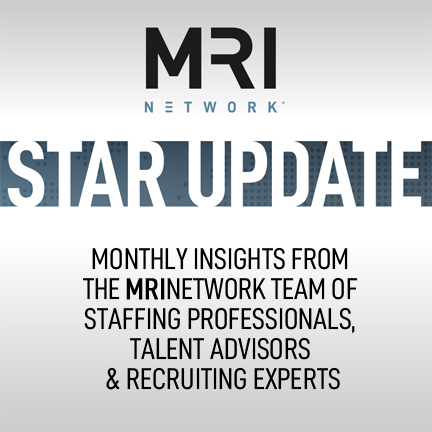 If you want to build (and keep) a successful and productive team, it’s imperative that your organization keep metrics and track data on employees. But even though the use of people analytics has become more common, many companies don’t really have a clear grasp of the specific metrics that affect performance in their organizations.
If you want to build (and keep) a successful and productive team, it’s imperative that your organization keep metrics and track data on employees. But even though the use of people analytics has become more common, many companies don’t really have a clear grasp of the specific metrics that affect performance in their organizations.
“It can also be overwhelming to figure out just what data you should be tracking and relying on to enhance your company’s performance,” says Nancy Halverson, MRINetwork Senior Vice President, Global Operations. “Today there are more than enough ways to track people analytics and it can be detrimental to use the wrong ones to build a business.” Everything from new hire performance to job absence rates are typically kept on hand by a human resources team. But not everything is entirely valuable to focus on for your organization.
“Once organizations focus in on the metrics that work for their businesses, the next step is the acknowledgment that the value of metrics increases exponentially when measured over time,” according to Forbes. “Unless certain metrics immediately point to a major issue, it is perhaps shortsighted to take significant action based on one or even two years’ data.”
Halverson points to three employee metrics that actually matter (and why):
First, it’s important to keep tabs on employee turnover and time to fill, especially the costs associated with these aspects of hiring and retention. “In today’s labor market, CEOs and senior leaders are focused on the time that it is taking to fill open positions, placing huge burdens on any organization’s talent acquisition function,” according to Forbes.
“These are critical metrics to follow because high turnover rates, for example, can greatly impact your company’s productivity,” says Halverson. “Instead, you want to keep your top employees with your organization for years so that you don’t need to waste time filling – and then refilling – a position repeatedly.”
Next, you should also keep tabs on how regularly employees are hitting performance goals. These should be set up in performance review conversations and checked up on during one-on-one meetings between managers and their teams. “Some organizations place great emphasis on goal-setting and often will apply HR metrics,” according to Forbes. “That said, using this metric must start with the quality of the goals being set. This alignment is true for both organization and individual goals.”
Finally, job engagement is a critical people analytics metric that you should keep a close eye on as you consider what to follow. Although this can be trickier to measure objectively, meaningful data can be collected via surveys and during performance review conversations. “Basically, you want to keep employees happy in their roles so that they continue to grow and develop at work,” advises Halverson, “and tracking engagement illustrates just how good of a job leadership is doing to accomplish this.”
According to Forbes, “A natural link exists between engagement and absence rates. Unless there are community or job-based factors that raise the absence rate, these two metrics very often move together but in opposite directions.”
In sum, there are many people metrics that a company should consider when helping their organization succeed. Employee turnover rates, time to fill, performance goals met and job engagement are just some of the most important. By tracking this information and using it to inform how the company is run you’ll be able to identify patters that predict performance – and have happier employees who are more productive.